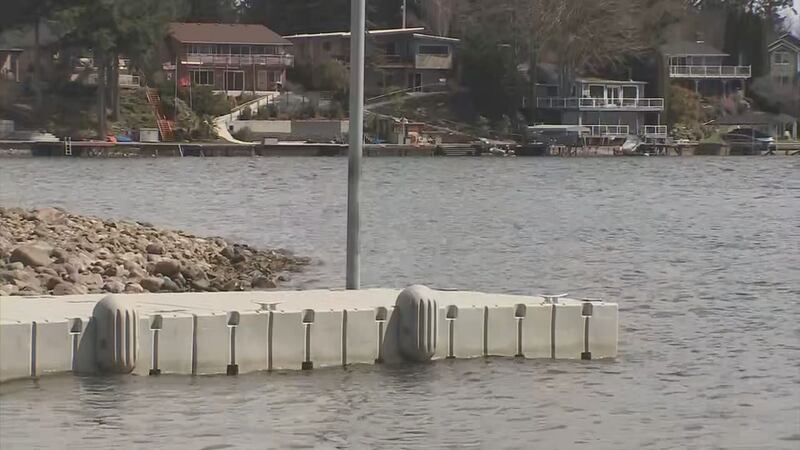Tucked about 20 miles east of Tacoma sits a 2,500-acre manmade reservoir. Lake Tapps has become a favorite among locals for its postcard views and recreation capabilities. Swimming, fishing, boating, and water-skiing — you can do it all, but only if water levels meet the minimum requirement.
If they don’t? Well, no boating, water-skiing, or swimming.
Taking away activities like this takes most of the fun to be had out of the lake. Over its lifetime the lake has run unseasonably low, delaying the start for some water-based activities, but that’s usually the exception, not the rule. This year Lake Tapps is facing a delayed start to its April 15 opening day due to uncharacteristic weather patterns.
This year, Washington’s wet season (October to present) is the driest season we’ve had since 2005, with the Lake Tapps area seeing the driest year-to-date conditions since 1985. With insufficient rainfall, typically we have our melting snowpack to turn to as temperatures climb from the 60s into the 70s. But unseasonably cold temperatures averaging the 50s are keeping the snow intact and not melting into our rivers.
So, the domino effect here is that unseasonably cold and dry weather leaves us with little-to-no supply to work with come time to fill our reservoirs. Mud Mountain Dam sits just upstream and is an important element to Lake Tapps’ water supply. Year-to-date totals indicated only 9.54″ of rain. Year-to-date totals this time last year were already at 20″.
If you’ve found yourself asking, “Now what?” — let’s use an analogy before diving into the deep end.
The water system operates very similarly to a bank. Rain and mountain runoff are the “payday” while water in our dams act as a “savings account.” Due to our driest wet season since 2005, obviously Lake Tapps has neither a healthy savings nor steady paydays, but that’s where Cascade Water Alliance steps in.
With the recent rainfall from this past week, CWA was able to turn up the water supply from 20 cfs to 990 cfs yesterday. For your record, 990 cfs is the same as 26 million gallons of water per hour. Breaking it down further, this works out to be about a half a foot a day and as long as steady rains or warmer temperatures melt the snowpack, we could continue this trend and still reach the April 15 target of 541.5 feet.
On Monday, the lake measured 539.40 feet and by Tuesday evening it was 540.17 feet and counting. The progress sounds miniscule, but considering the quantity of water we’re talking about here, it’s certainly a step in the right direction. You can track the lake’s progress through the United State Geological Survey in real time here.
©2023 Cox Media Group








